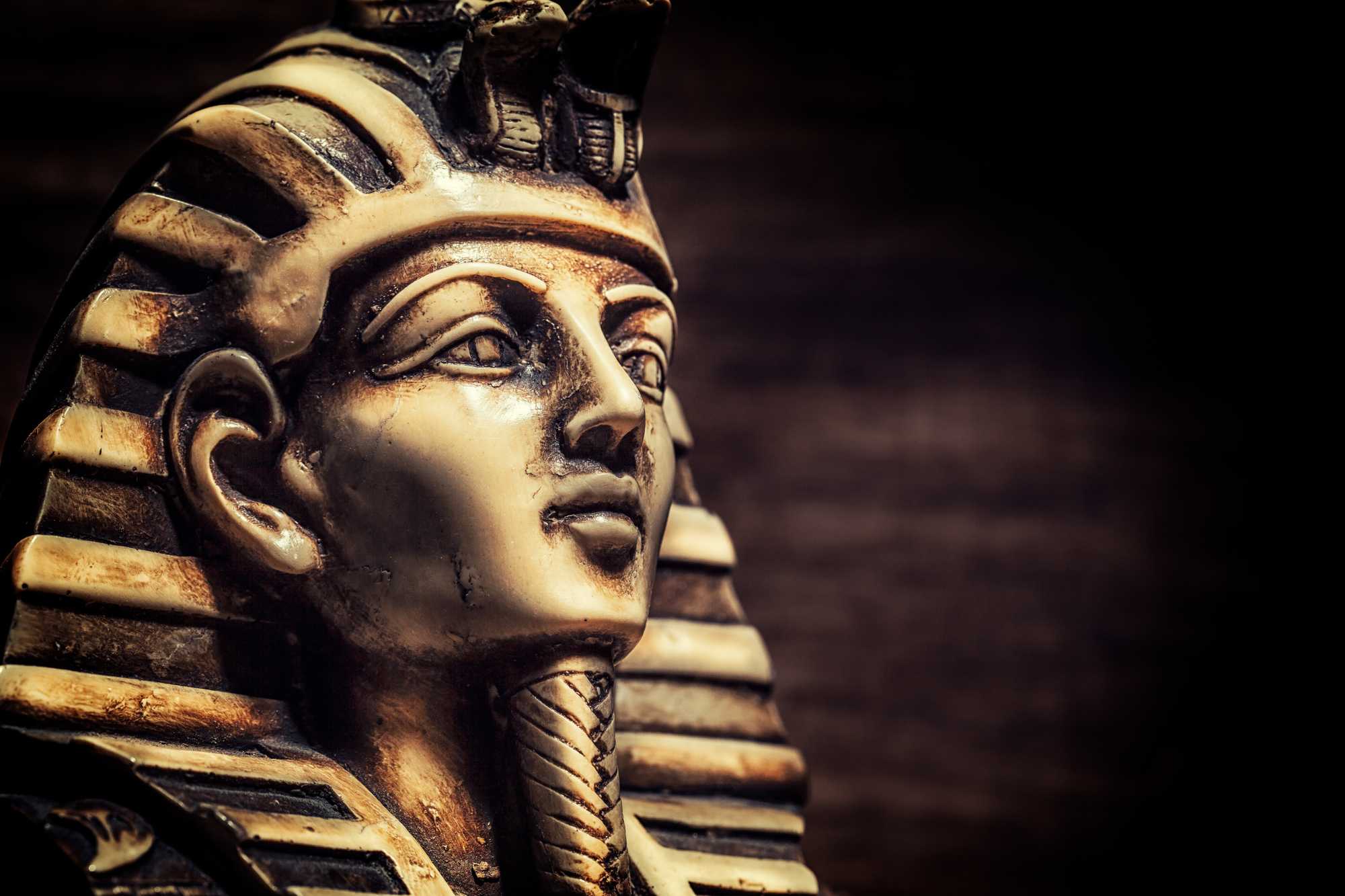BY DAVE RANKIN
Up to this point, Tutankhamun had made considerable effort to restore the confidence of the nation. Moving the capital city back to the southern capital of Thebes was the first order of action. Next, he dismantled the devotion to Aten and changed his name to what we now know it as. He even attempted to rebuild diplomatic relationships that were severed by Akhenaten. Things were almost back to normal and the “boy king” was on the way to living a long and prosperous reign. However, “King Tut’s” life was mysteriously cut down only after nine years on the throne.
There are a few accounts surrounding the death of nesew Tutankhamun. The first story I had heard is best described by the Egyptian scholar, Moustaffa Goudalla. From his book Historical Deceptions, Mr. Goudalla writes the following. “In his year nine, Tutankhamun, accompanied by Aye (his chief advisor), went to Sinai to try to urge Akhenaten and his followers to return to Egypt. However, instead of his pleas being accepted, he was accused of betraying his faith and was killed.”
Like you, I do have a few questions. For starters, Akhenaten is said to have passed a number of years prior to Tutankhamun’s rise to the throne. Then the next logical question is to ask, if Akhenaten was dead then whom did Tutankhamun go see?
Another question surrounding his death is centered on the violence that occurred. After Howard Carter had found “King Tut’s” tomb in 1922, the examination that followed in 1968 divulged that “The mummy was found to have many broken bones and joints,” including a fatal blow to the head. This alone would support a part of Moustaffa Goudalla’s claim that “King Tut” was beaten. However, we still do not have sufficient evidence for it to be completely true.
Another account surrounding the death of Tutankhamun was conducted in a scientific experiment around 2006. A team from the Cairo University led by radiologist Ashraf Selim discovered that Tutankhamun’s death happened because of a severe infection from a broken leg, probably from a chariot accident. In the team’s eyes, this closed the investigation to the passing of the nesew. “I think it is the end of the investigation. We can close this file,” said Ashraf Selim proudly.
However, a study published in 2010 offered another perspective on “King Tut’s” passing. Archaeological evidence tells us that the nesew suffered from a number of illnesses, including “Malaria and Kohler disease (a rare bone disorder of the foot).” There were various canes found in Tutankhamun’s tomb that could support this. While these ailments may have contributed, it doesn’t provide a clear and definite picture.
What we do know is that Tutankhamun lived a short life passing around 1323 BCE at the age of 18. By then, he and his wife Ankhesenamun had twin daughters who were still born. Thus, producing no surviving heir. I had read somewhere that he liked to hunt ostriches for sport. This action is said to show the nesew’s power over nature. Howard Carter’s documented history of the tomb advises us an “ivory fan trimmed with ostrich feathers” was found in Tutankhamun’s tomb.
The preservation of the tomb very much catapulted Tutankhamun into fame, giving him the name of “King Tut.” One article wrote, “While the treasures were incredible, the tomb was unusually small.” But the emphasis should be that Tutankhamun’s wooden sarcophagus had thick sheets of gold layered around it. Making it the most expensive coffin valued well over one million dollars. Above everything else, this made Tutankhamun’s final place of rest priceless.

